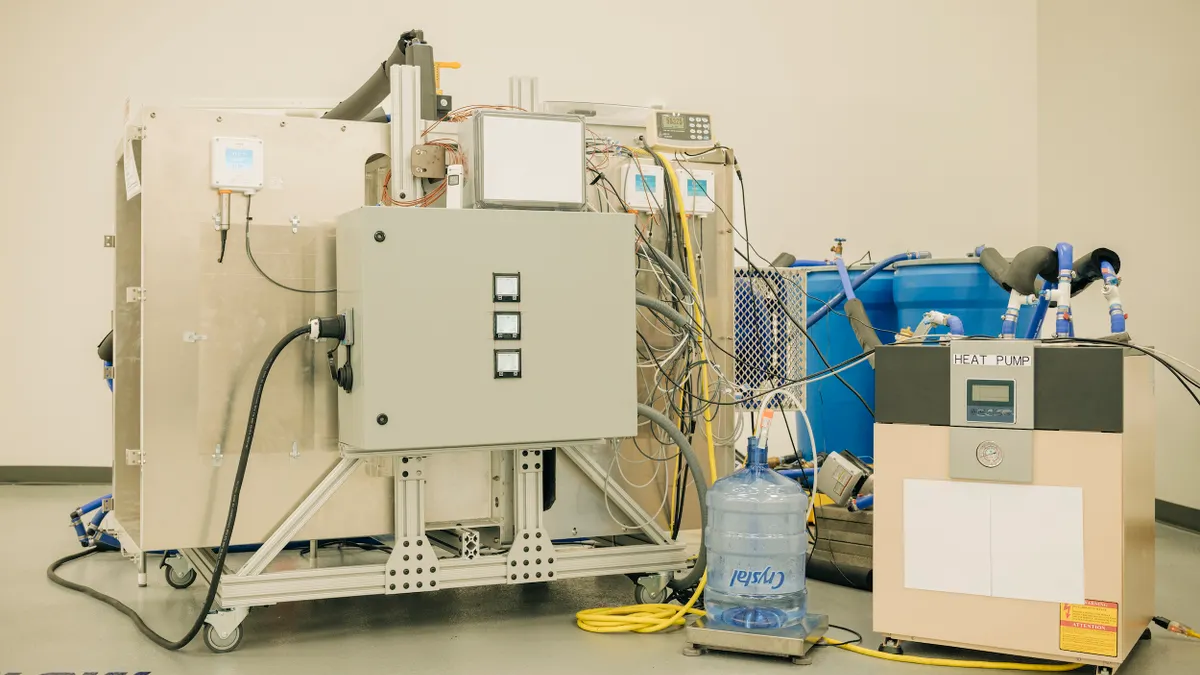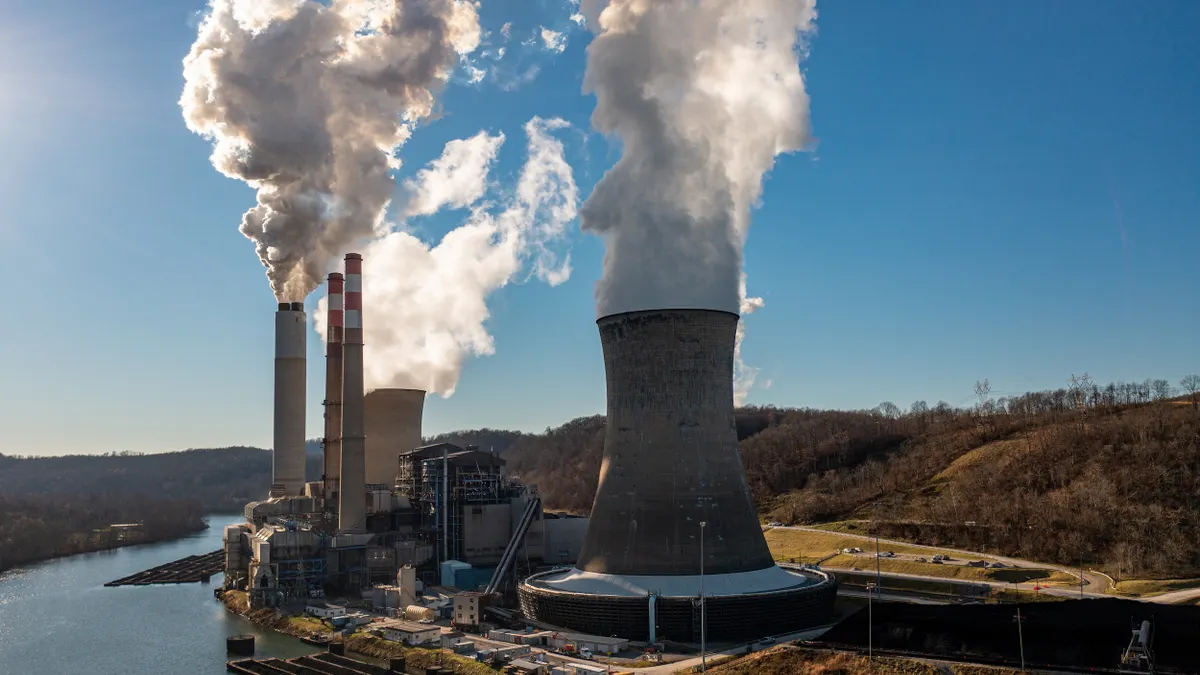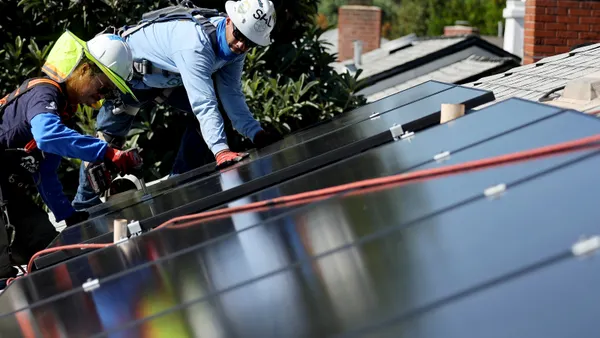The newest partnership to come from the rise of distributed generation could be between utilities and new home developers.
Customer demand for distributed energy resources (DER) has already created new partnerships for utilities with their customers and with DER providers. Policies to support state climate and clean energy goals are aimed more and more at increasing customer access to DER. Among them are net zero energy (NZE) initiatives for new homes.
A new approach to NZE, validated in research released May 1 by the Smart Electric Power Alliance (SEPA) and the Coalition for Community Solar Access (CCSA), could put new renewable resources to work and form the foundation for new uses of community solar and new partnerships between utilities and NZE homebuilders.
These new partnerships could mean big new opportunities for the utilities, homebuilders and developers of community solar and other distributed renewables.
Support for the NZE concept produced 1,153 NZE projects in the U.S. in 2017, an increase of 56% over 2016, according to the 2017 Net Zero Energy Coalition report. That included 6,059 NZE buildings, up 49% from 2016, and 13,906 NZE units, up 70%. California accounted for 5,279 units, far more than second-place Arizona's 1,021 units. Units would be part of small NZE multifamily apartment and condominium complexes. They could also be units in larger housing projects.
A landmark addition to California's building code, approved in May, mandates that all new homes built from 2020 include advanced energy efficiencies and solar. It was widely credited as an important boost for rooftop solar. But a little-noticed provision allows developers to use community solar instead of rooftop solar if they so choose.
Why community solar?
Utilities like big solar projects they can control, and consumers like rooftop solar that they can own. Community solar can work for both. And it can be a better deal for new NZE homeowners, according to a June report done for the Natural Resources Defense Council and the National Rural Electric Cooperative Association (NRECA) by The Brattle Group.
Community solar projects are interconnected with utilities' distribution systems in ways that give utilities the same control they get with larger projects. But they are owned or leased like rooftop solar by individual customers. And they are big enough to get economies of scale that make them more affordable than rooftop solar.
"Community solar makes that conversation a little more two-way because it includes the utility providing an interconnection service to the developers and could result in them jointly developing the project."

Ryan Hledik
Report author and principal at The Brattle Group
Community solar has been held back by program design complexities. But the appeal is clear, and the complexities are being resolved. Community solar's installed U.S. capacity grew 112%, from 387 MW at the end of 2016 to 734 MW at the end of 2017, according to the Brattle-NRECA study.
At least 228 utilities now have community solar offerings, including 160 electric cooperatives, 37 public power utilities and 31 investor-owned utilities, SEPA Manager Dan Chwastyk told Utility Dive.
Those numbers could get much bigger much faster if the findings in Brattle's "Beyond Zero Net Energy? Alternative Approaches to Enhance Consumer and Environmental Outcomes" prove out. It reports buildings can get to NZE using community solar with a 25% or greater output at a 30% or lower cost.
To take advantage of those benefits, utilities, community solar developers and homebuilders may see reasons to work together to expand community solar's growth even faster than its current pace.
"Community solar developers and homebuilders now go to the utility with their plans," Brattle Group Principal and paper lead author Ryan Hledik told Utility Dive. "Community solar makes that conversation a little more two-way because it includes the utility providing an interconnection service to the developers and could result in them jointly developing the project."
The benefits of a systems approach
Rooftop solar is used in the vast majority of NZE buildings, Hledik said. "This analysis compared the economics and environmental impacts of using community solar and of using rooftop solar in New Mexico and Minnesota, not to show one is better, but to show there are ways to expand thinking on net zero energy."
NZE initiatives are too narrowly focused on the individual building level, Brattle found. Using community solar instead of rooftop solar is an example of achieving better outcomes with "a broader, system-oriented approach to satisfying decarbonization objectives."
At some locations, a community solar project's economies of scale and higher capacity factor could serve a 200-home NZE development and reduce solar costs by 30% to 35%, Brattle concluded.
A system-oriented approach to an NZE building involving community solar or other types of renewables might make the building's "total energy consumption" greater but produce greater "net environmental benefits," Brattle reported.
It could expand the kinds of NZE buildings, the number of NZE homeowners and the diversity and capacity of renewables used, Brattle found. The end-uses of the renewables generation could be expanded to things like heating, charging electric vehicles and providing grid services like peak shaving and resilience, Brattle added.
The study, one of the first to compare rooftop and community solar for NZE homes, used actual 2016 market data and technologies and assumed a community solar project of 500 kW to 1,000 kW that matched the output of 200 individual 5 kW to 10 kW rooftop solar systems in New Mexico and Minnesota markets.
Its focus is "non-urban" new NZE housing developments. "One of the potential disadvantages of community solar is the very high land cost," Hledik said. "But there are a lot of opportunities, especially in non-urban or less urban areas, where land for community solar would be lower cost."
Under these specific market conditions, the economies of scale and locational advantages of community solar would deliver "13% lower total solar PV project expenditures per watt," Brattle found. The 25% to 30% greater annual energy output per watt is how community solar gets to 30% to 35% cost savings.
The community solar approach could also produce enough electricity for 80 to 90 more NZE homes than in the study's 200 hypothetical home rooftop solar development scenario, Brattle found. It would also provide 50% to 60% lower electricity bills, through the avoided use of grid generation, and a 40% to 45% average CO2 emissions reduction.
Brattle's study "is a data-based representation of what was already intuitively clear," CCSA Executive Director Jeff Cramer told Utility Dive. "As policymakers working on the NZE concept lead California-like reviews of building codes, this will be a good data-driven argument to use a system-oriented approach and to include community solar."
Policymakers working on building codes have focused on getting homes' net energy consumption to zero energy, NRECA Senior Director for Strategic Initiatives Keith Dennis told Utility Dive. But that is a flawed way to design NZE homes because it can result in homes that produce energy at the wrong time of the day and do nothing to alleviate system congestion or offer grid services.
A system-wide approach allows for "all sorts of other ways that you could optimize the system and provide better consumer cost and environmental outcomes," he added.
What it means to utilities
"Policymakers, utilities and community solar developers, and homebuilders should be doing this type of analysis on a project by project basis," Brattle's Hledik said. "Under the right conditions, there are opportunities."
The opportunity for utilities, though unquantified by the report, is substantial, he added. Using community solar instead of rooftop solar for new housing developments allows utilities "better visibility into the capacity and operation of solar PV."
If the utility is more proactive, it could take "a coordinated approach with housing developers" and increase "flexibility in planning the distribution system for the new housing development," Hledik added. That would "expand the portfolio of products and services that could be offered to customers."
"The savings are not only economies of scale but eliminating redundancy of hardware and streamlining management."

Keith Dennis
Senior Director for Strategic Initiatives, NRECA
Both Great River Energy (GRE) executive Jeffrey Haase and Middle Tennessee Electric Membership Corporation (MTEMC) executive Brad Gibson agreed.
Community solar has already demonstrated cost savings per unit of energy and locational benefits for the utility's distribution system, GRE's Haase emailed Utility Dive. As Brattle reported, properly located community solar can "reverse power flow, voltage fluctuations, and overloading of feeders."
A systems approach would allow the utility to collaborate with the homebuilder on the solar project and on other end-uses, like grid-integrated water heating. These uses could deliver grid services that help utilities balance their systems without investments in new resources, he added. A west-facing community solar system with single axis tracking can, at significantly less cost than rooftop solar, generate power later in the day, helping to shave peak demand.
Other advantages of community solar for MTEMC are that it keeps customers engaged with the utility and compliments an "evolving grid," Gibson said. The utility has limited visibility of the operational performance of rooftop solar, but it can "see, control and use" community solar.
Both NRECA's Dennis and Brattle's Hledik added that interconnecting and maintaining a single community solar project, though not simple, is less complicated and costly than doing it for a neighborhood of individual rooftop solar arrays.
That is the advantage of designing and managing at a system level, NRECA's Dennis said. "The savings are not only economies of scale but eliminating redundancy of hardware and streamlining management."
A new partnership?
In places where NZE mandates include the option, homebuilders and community solar developers should be talking to utilities the same way rooftop solar installers are talking to them, Dennis said. "When policymakers wake up to the opportunity in that approach, it could mean a big new market for community solar."
Either the utility or the homebuilder could take the community solar project on, Brattle's Hledik said. Or they might bring a community solar developer into the discussion.
The study shows that, with the right conditions, there would be cost savings, he added. "How they would be shared between the utility, the developer, the homebuilder, and the home buyer would depend on the business model, but would likely be shared between them."
Homebuilders now sell the idea of rooftop solar to prospective buyers, Hledik said. Community solar would work the same way, though it introduces technical issues related to pricing and crediting customers. "The logical next step for this research is understanding those numbers."
Some builders have already begun testing possibilities.
Off-the-Grid Design's six-story, four-condominium Sol-Lux Alpha NZE complex in San Francisco is powered by what is almost a community solar project, according to company founder John Sarter.
"It is the most energy efficient building we could build," he said. A 40-kW rooftop solar canopy supplies twice the amount of energy needed by the four units and the common areas.
Each unit has enough battery energy storage for at least two days, with smart inverters and other technologies to allow it to operate off-grid, Sarter added. "It demonstrates that living spaces can be luxurious and carbon neutral."
Because the four units share the power from the solar canopy, it is much like a community solar-powered building, though Pacific Gas & Electric (PG&E) required separate metering, Sarter said. He subsequently discovered that ownership of the canopy by the Homeowners Association (HOA) could have made it a true community solar installation.
Sarter did not have per-kWh pricing for the solar-plus-storage system, but believes it is competitive with grid electricity. Amortized over the life of the energy system, and including incentives, the price is about $1,000 per year, he said. "And these owners will never see an energy bill."
Sarter's company recently put a hold on a community solar-rooftop solar-energy storage NZE development planned for Sonoma, Calif. in partnership with PG&E and several clean energy advocates.
The development, which would have been as many as 40 homes with land set aside for community solar, was put on hold when PG&E, facing financial burdens from the 2017 wildfires, was forced to back out. Sarter's company would have financed the real estate development, but the community solar project could have been owned by PG&E or the HOA, he said. "Other real estate developers could certainly do this."
Planning had not gone as far as cost estimates, but "it would be less expensive than the Sol-Lux project because of economies of scale and falling system costs," he added.
But the Brattle report is not about whether community solar or rooftop solar is a better deal, it is about a new approach to NZE building, NRECA's Dennis stressed again.
"A mandate to reduce BTUs or kWh to zero is simpler to explain but it is misguided," he said. "The mandate should focus on the things like cost and CO2 savings that policymakers want to achieve. That kind of policy would create a technology-neutral playing field and offer homebuilders the opportunity to partner with rooftop solar installers or community solar developers."


















